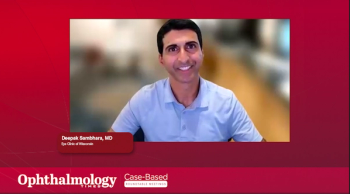
Practical Insights and Shared Experiences in Managing Geography Atrophy
An expert summarizes real-world GA management lessons, highlighting personalized imaging-guided care and patient-centered strategies to maintain vision stability.
Dr. Sambhara closes with practice-level lessons from a highly interactive GA case roundtable. Case 1: Early intervention can be impactful, but GA is not one-size-fits-all—treat the patient, not the picture—while leaning on multimodal imaging (OCT, NIR, FAF) to individualize timing and follow-up. Case 2 (monocular, non-foveal GA): Identify “fast growers” (non-foveal, multifocal, peri-lesional hyper-AF) and balance efficacy and safety when selecting agents and q8-week dosing to preserve function in a high-stakes eye. Case 3 (conversion to exudation): Both diseases can be treated; same-day dual therapy is feasible, but many elect to separate complement and anti-VEGF visits for safety attribution, logistics, and payer considerations. Discussion highlighted how practice setting (VA vs private/academic), payer constraints, and geography influence dosing intervals, surveillance cadence, and patient education. The unifying theme: create “locked-in” patients through imaging-based counseling and clear goals, and use shared, real-world experience to navigate a still-contentious space where selective treatment remains common.
Newsletter
Don’t miss out—get Ophthalmology Times updates on the latest clinical advancements and expert interviews, straight to your inbox.


















































.png)


